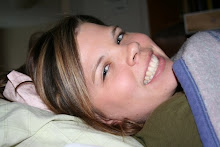For another class of mine we read the book Encounter by Jane Yolen. This book relates back to Christopher Columbus' landing in the 'new world' back in 1492. It is written from the perspective of a young Taino 'Indian' who had dreams about the bad events that would transpire if the Taino people welcomed Columbus and his crew. His warnings to his people went unheeded and the book ends with the protagonist as an old man regretting that adults did not listen to the words of a child, and recognizing that the ways of the Taino had been lost.
After finishing reading this book, my first thoughts were of the insider vs. outsider debate we had in class a few weeks ago. It is a book written by a white female about Indian people who lived centuries ago and whose culture is relatively unknown in today's society. There is no place in the book where Yolen discusses her research or how she found the information she used, although the fact that she did research is evident in her discussion of the Taino and what is known about them at the end of the story. However the fact that stood out the most for me was that the illustrator recognized in a note at the end of the book that his pictures are not completely accurate at least with regards to clothing. David Shannon, the illustrator, made the conscious decision to step away from the cultural accuracy of the probable nudity of the Taino people and dress them all in cloth and animal hide clothing, following the tradition of other tribes.
He clearly states that he made this choice because, "...I was faced with the problem of how to present them without offending those who object to nudity in a children's book" and I can understand why he made this decision. My question is then where is the line that differentiates the importance of cultural accuracy and the need for societal acceptance? Without an audience, a book will simply sit on a shelf, allowing for no impact or effect on any person anywhere. However, do we want a book to be widely circulated if the information is not culturally accurate and it can rejuvinate generalizations and stereotypes? I realize that this is by far not the least extreme example of information being misrepresented, but that does not change the fact that this is still an example.
Students have a need to see themselves in the books they read and in the characters of those books. They need to see cultural traditions and heritage that they can relate to. It does not matter the race, ethnicity, religion, social class, etc. the student belongs to. The reading will have little importance or impact if there is nothing for the kids to relate to. Because of this, we as teachers have the job of creating a diverse library for our classes and providing our students access to books that are likely to make them want to read in addition to discussing and integrating that literature into our classrooms. Likewise, the books are then available to students who belong to different social groups and who are interested in learning about people who are different from them in some way. But if we are not there to help kids recognize and process the misconceptions presented in books, or if parents do not help make those distinctions, where does that leave the kids? I could not, in good conscience, isolate kids from other cultures because the literature available is not perfect. Literature is rarely perfect regardless of who is the author or illustrator. But how do we avoid isolationism without perpetuating social stereotypes?
I know that we have discussed this in this class, as well as others, but it is something I have recently come more to terms with than I have previously. Before it was more abstract, but now that I am in a classroom that is filled with students of different races, religions, family set-ups, etc., it has really made me recognize the importance of a good diverse library. A lot of these students do not like to read because of the fact that it has nothing to do with them. Some kids have hated reading enough, consistently enough that they are several grade levels behind where they should be. I have talked to their teacher and to the kids and have figured out approximately how these trade books have been incorporated into previous classrooms, and I can't help but wonder if that might have been different if they had more exposure to a wider variety of books?
Tuesday, February 17, 2009
I Can't Think of a Good Enough Title. I'll Get Back to You on That.
Posted by Lindsey at 9:30 PM
Subscribe to:
Post Comments (Atom)

0 comments:
Post a Comment